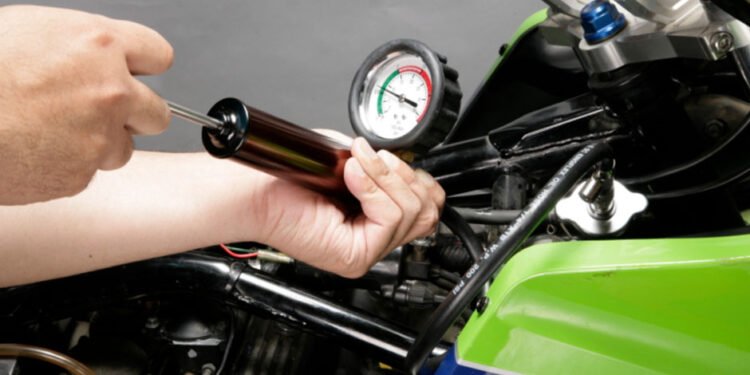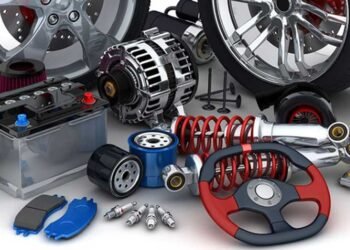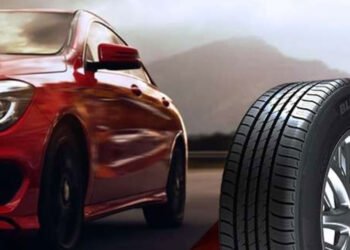Your motorcycle’s radiator is critical for ensuring optimal engine performance and longevity. Without a properly functioning radiator, the engine can overheat, leading to costly repairs or even total engine failure. Routine motorcycle radiator maintenance is essential to keep your bike running smoothly, whether you’re cruising on the open road or pushing your limits on the track. Here’s a comprehensive guide to maintaining your motorcycle radiator.
1.Understand the Function of Your Motorcycle Radiator
Before diving into maintenance, it’s crucial to understand the role your radiator plays. A motorcycle radiator dissipates heat generated by the engine, maintaining the engine’s optimal temperature range. It uses coolant, circulated by a water pump, to absorb and transfer heat away from the engine block. When the radiator isn’t maintained, the cooling system’s efficiency decreases, leading to potential overheating issues.
2.Inspect the Radiator Regularly
A visual inspection of your radiator should be part of your routine motorcycle check-up. Here’s what to look for:
- Leaks: Check for any coolant leaks around the radiator or connecting hoses. Coolant spots on the ground after parking may indicate a leak.
- Physical Damage: Inspect the radiator fins for bent or broken sections. Damaged fins can reduce airflow and heat dissipation.
- Debris Accumulation: Dirt, bugs, and other debris can clog the fins, impede airflow, and reduce cooling efficiency.
Address any visible issues promptly to prevent further damage.
3.Clean the Radiator Fins
Radiator fins are delicate but require regular cleaning to maintain proper airflow. Follow these steps for safe cleaning:
- Turn Off the Engine: Ensure the engine is cool to avoid burns or additional damage.
- Use Compressed Air: Gently blow air through the fins to remove loose dirt and debris.
- Soft Brush and Water: For stubborn dirt, use a soft-bristle brush and mild soapy water. Avoid using high-pressure water, which can bend the fins.
- Dry Thoroughly: Allow the radiator to air dry completely before operating the bike.
Regular cleaning keeps your radiator functioning efficiently and prevents overheating.
4.Check Coolant Levels and Quality
Coolant is the lifeblood of your radiator system. Low or degraded coolant can lead to overheating and engine damage. Here’s how to manage coolant:
- Check Levels: Locate the coolant reservoir and ensure the level is between the “minimum” and “maximum” marks. Add coolant as needed.
- Inspect Coolant Quality: Old or contaminated coolant may appear discolored or contain debris. If it looks dirty, replace it.
- Top Up with Correct Coolant: Use the coolant type recommended in your motorcycle’s owner manual. Mixing incompatible coolants can reduce performance.
5.Perform Coolant Flushes
Over time, coolant degrades and loses its effectiveness. A coolant flush removes old coolant and any debris or contaminants in the system. Perform a flush every two years or as recommended by your manufacturer.
Steps for a Coolant Flush:
- Drain the old coolant by opening the drain plug at the bottom of the radiator.
- Rinse the system with distilled water to remove any residue.
- Refill with fresh coolant and ensure there are no air bubbles in the system.
- Run the engine for a few minutes, then recheck levels.
A regular coolant flush ensures your radiator operates at peak efficiency.
6.Check and Replace Hoses
Radiator hoses transport coolant between the engine and the radiator. Over time, they can become brittle, cracked, or develop leaks. During your inspection:
- Feel for Weak Spots: Gently squeeze hoses to check for soft or spongy areas.
- Look for Cracks: Visually inspect for cracks, splits, or bulges.
- Replace as Needed: If any hoses show signs of wear, replace them immediately to avoid leaks or ruptures.
Invest in high-quality replacement hoses to ensure durability and long-term performance.
7.Monitor the Radiator Cap
The radiator cap maintains pressure in the cooling system, preventing coolant from boiling at higher temperatures. A faulty cap can lead to leaks or reduced cooling efficiency. Inspect the cap for:
- Worn Seals: Check for cracks or brittleness in the rubber gasket.
- Corrosion: Look for rust or mineral deposits that may affect sealing.
- Proper Fit: Ensure the cap fits snugly and locks securely.
Replace the cap if it shows any signs of wear or damage.
8.Address Overheating Issues Promptly
If your motorcycle begins to overheat, address the issue immediately. Common causes include:
- Low Coolant Levels: Top up coolant if it’s low.
- Blocked Fins: Clean the radiator to restore airflow.
- Thermostat Malfunction: A stuck thermostat can prevent coolant flow.
- Water Pump Failure: Inspect and replace a faulty water pump.
Ignoring overheating can lead to severe engine damage, so act quickly if your temperature gauge rises unexpectedly.
9.Avoid Overloading Your Motorcycle
Carrying excess weight can strain your engine and cooling system. While this doesn’t directly damage the radiator, it increases the engine’s heat output, making efficient cooling even more critical. Stick to your manufacturer’s recommended weight limits to reduce unnecessary stress on the system.
10.Winterize Your Motorcycle
If you store your motorcycle during the winter months, protect the radiator and cooling system:
- Drain Coolant: Prevent freezing by draining the system completely or replacing the coolant with antifreeze.
- Inspect for Leaks: Check the radiator and hoses for damage before storage.
- Cover the Bike: Use a breathable cover to keep dust and moisture out of the radiator.
Winterizing ensures your radiator is ready for action when riding season returns.
11.Use High-Quality Coolant and Radiator Products
Not all coolants are created equal. High-quality coolant prevents corrosion, resists freezing, and provides optimal heat transfer. Additionally, consider radiator protectants or additives that enhance performance and longevity.
Consult your owner’s manual or a trusted mechanic for product recommendations to match your motorcycle’s specific needs.
12.Schedule Professional Maintenance
While DIY maintenance is essential, periodic professional inspections can catch hidden issues. Mechanics have the tools and expertise to:
- Perform pressure tests to check for leaks.
- Inspect and replace components like the thermostat or water pump.
- Ensure the entire cooling system operates efficiently.
Scheduling annual maintenance ensures your radiator and engine stay in top condition.
13.Tips for Prolonging Radiator Life
- Avoid Hard Impacts: Radiators are delicate; avoid situations where debris or impacts could damage the fins.
- Stay on Top of Maintenance: Regular inspections and cleaning prevent minor issues from escalating.
- Park Smart: Avoid parking in areas with high dust or debris to minimize clogging.
14.Know When to Replace Your Radiator
Even with proper maintenance, radiators have a finite lifespan. If your radiator develops persistent issues such as constant leaks or severe corrosion, replacement may be necessary. Investing in a new radiator ensures continued performance and protects your engine from overheating.
By following these motorcycle radiator maintenance tips, you can ensure your cooling system remains efficient and reliable. A well-maintained radiator not only enhances engine performance but also extends the life of your motorcycle. Prioritize regular care, address issues promptly, and enjoy worry-free rides for years to come.
Ready to take your motorcycle maintenance to the next level? If you’re looking for expert radiator repairs or replacements, trust professionals with the tools and experience to keep your bike running at its best.












